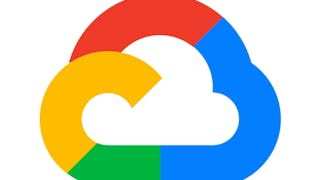Generative AI applications can create new user experiences that were nearly impossible before the invention of large language models (LLMs). As an application developer, how can you use generative AI to build engaging, powerful apps on Google Cloud?


(12 reviews)
What you'll learn
Describe generative-AI-based application types and use cases.
Describe how to build prompt templates to improve model response quality in applications.
Describe the subsystems of RAG-capable architectures for generative AI applications on Google Cloud.
Build an LLM and RAG-based chat application.
Skills you'll gain
Details to know

Add to your LinkedIn profile
3 assignments
See how employees at top companies are mastering in-demand skills

There are 6 modules in this course
In this module, you learn about generative AI applications, and types of applications that can use the power of generative AI. You also learn about foundation models provided by Google, and challenges that exist when using generative AI in your applications.
What's included
1 assignment5 plugins
In this module, you learn about generative AI prompts. A prompt is a natural language request submied to a language model to request a response back. You can design your prompts to improve the results being returned from a model.
What's included
1 assignment5 plugins
In this module, you experiment with Vertex AI Studio, which provides tools to rapidly prototype, tune models with your own data, and seamlessly deploy to applications. You explore multimodal capabilities of Gemini, design prompts, and generate conversations.
What's included
1 app item1 plugin
In this module, you learn how to improve the accuracy of foundation models. You learn about retrieval augmented generation, or RAG, a technique for grounding a foundation model with external sources of knowledge. You'll also see an example RAG-capable generative AI solution architecture on Google Cloud.
What's included
1 assignment6 plugins
In this module, you build a chat application that uses large language models (LLMs) and retrieval augmented generation (RAG) to create engaging and informative conversations.
What's included
1 app item
Link to lesson PDFs
What's included
1 reading
Instructor

Offered by
Explore more from Software Development

Google Cloud

Google Cloud

Google Cloud
 Status: Free Trial
Status: Free Trial
Why people choose Coursera for their career





Open new doors with Coursera Plus
Unlimited access to 10,000+ world-class courses, hands-on projects, and job-ready certificate programs - all included in your subscription
Advance your career with an online degree
Earn a degree from world-class universities - 100% online
Join over 3,400 global companies that choose Coursera for Business
Upskill your employees to excel in the digital economy
Frequently asked questions
Yes, you can preview the first video and view the syllabus before you enroll. You must purchase the course to access content not included in the preview.
If you decide to enroll in the course before the session start date, you will have access to all of the lecture videos and readings for the course. You’ll be able to submit assignments once the session starts.
Once you enroll and your session begins, you will have access to all videos and other resources, including reading items and the course discussion forum. You’ll be able to view and submit practice assessments, and complete required graded assignments to earn a grade and a Course Certificate.
More questions
Financial aid available,

